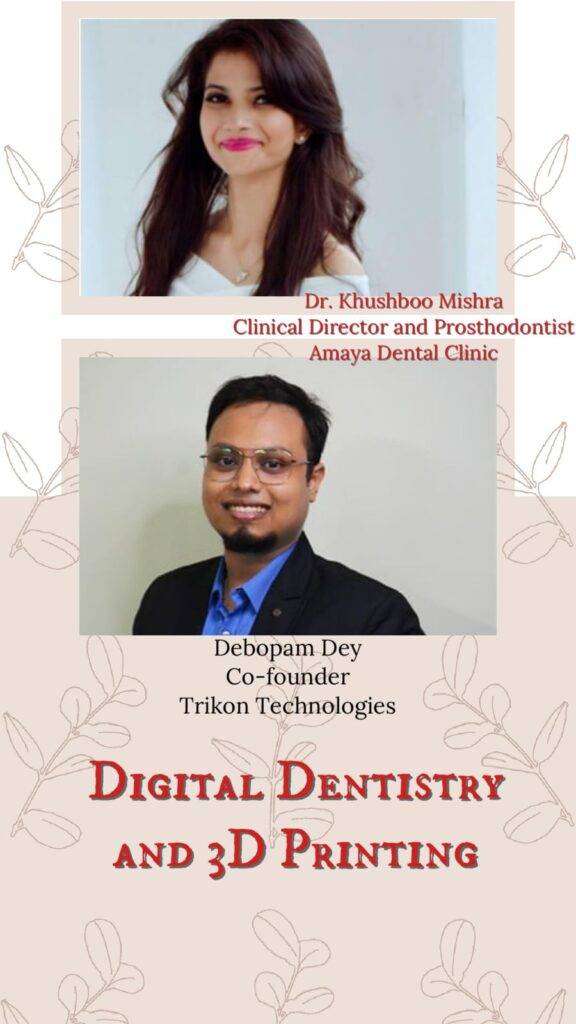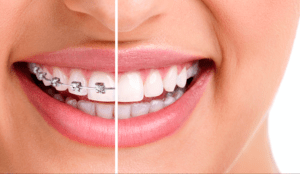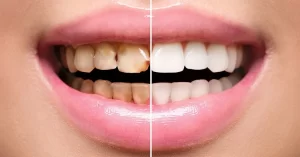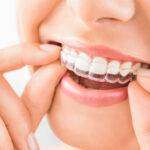Digital Dentistry and 3D printing goes hand-in-hand. When we take the intra-oral scans of a patient, we often 3D print the anatomical models which is not only leads to better prognosis and treatment plans but also improves the patient experience and comfort. Digital dentistry encompasses any digital or computer-based technology that your dental professional may use to examine, diagnose, and treat the health of your mouth.
Trikon Technologies is one such company who believes in harnessing the full potential of additive manufacturing sciences to elevate the status quo in prototyping and product development. With their in-house developed SLA and FDM printers, they are solving a number of complex use cases and are diving deep into the research and development of complex dental solutions using 3D printing. 3D printing and Digital Dentistry together can reshape the entire dental industry with custom patient specific solutions. Debopam Dey is a co-founder of Trikon Technologies and is looking after the Strategy and Operations head of the company. He was a junior research fellow for a DRDO sponsored project post his graduation.
According to M. Revilla-Leon article “An update on applications of 3D printing technologies used for processing polymers used in implant dentistry,” 3D printing has advantages in process engineering compared with traditional wax loss technology and subtraction computer numerical control methods. Owing to its rapid production, high precision, and personal customization, complete dentures, and implant teeth are easier to obtain.
Manufacturing working models for diagnosis and surgical treatment appear to be the most common use of 3D printing technologies. 3D printing technologies not only have a variety of clinical applications in prosthodontics, maxillofacial surgery, oral implantology, and other fields but also have great potential with distinctive advantages.
The appearance and disruptive development of 3D printing technologies bring favorable circumstances to the manufacturing of complex equipment in all walks of life. In the field of dentistry, 3D printing has a wide range of applications, making it possible to create new and more efficient methods for manufacturing dental products.
The most common application is to create working models for diagnosis and surgery, followed by a variety of implantable devices, which can help dentists provide patients with more predictable, less invasive, and less costly procedures. For products with complex structures, fine structures, and inconveniences to use mechanical processing technology, 3D printing can use an increasing number of material types and rely on digital data to create complex geometric shapes and accurately fulfill the complex and personalized needs in the dental field.
Types of Digital Dentistry Used Today
Some common types of dental technology used at Coastal Dental Care are:
- Digital radiography
Digital radiographs emit up to 70 percent less radiation than traditional X-rays and are more environmentally friendly.
- Cone-beam computed tomography imaging (CBCT)
A Cone-beam CT is a rotating X-ray machine which provides a three-dimensional view of teeth and the oral anatomy. Additionally, this imaging technique identifies oral conditions which are not detectable by regular X-ray screenings. A CBCT can also determine the exact position of teeth and their roots.
- Intra-oral cameras
Intra-oral cameras allow dental practitioners to see clear, accurate images of the mouth. Shaped like a wand, the camera can magnify images on a computer screen in real time. This enables patients to clearly see what the dentist is doing or referring to. In addition, the intra-oral camera can provide a detailed view of hard to see areas in the mouth. This helps to accurately identify problems such as a fractured tooth.
- Computer aided design or computer aided manufacturing (CAD/CAM) and 3D printing
Computer aided design and 3D printing have made it more efficient for practitioners to design and manufacture dental restorations.
Computer aided dentistry allows dentists to design, fabricate and insert dental restorations on the same day. Traditionally, a dental laboratory would make the restoration. This process could take up to 3 weeks. The new technology, however, means that the patient can receive the final restoration within a day.
Now coming to benefits of digital dentistry: –
The development of new technologies and techniques in dentistry offer a variety of advantages for patients. This includes:
Accurate condition diagnoses
Reduce time and costs
Enhanced patient experience
Improved communication
Here at our dental practice Amaya Dental, we take advantage of the modern advancements that digital dentistry has provided in order to give our patients the best experience possible. If you are in need of dental work or have gone more than six months without a visit, contact us today to set up an appointment with our office.

Dr. Khushboo Mishra take on Digital Dentistry and 3D Printing. Dr. Khushboo Mishra obtained her Bachelor of Dental Surgery from Krishnadevaraya College of Dental Science and Hospital. She graduated at the top of her class and was the various subjects rank holder in Rajiv Gandhi University of Health Science. She ranked number one in general medicine subject in RGUHS followed by many subjects. She pursued her post-graduate education at Bangalore where she completed three years of post-graduation Prosthodontic training at the BIDS where she specialized in full mouth rehabilitation, dental implants, veneers, crowns, bridges, inlays, onlays, dentures, TMJ and many more. Her now main focus area is digital dentistry.





